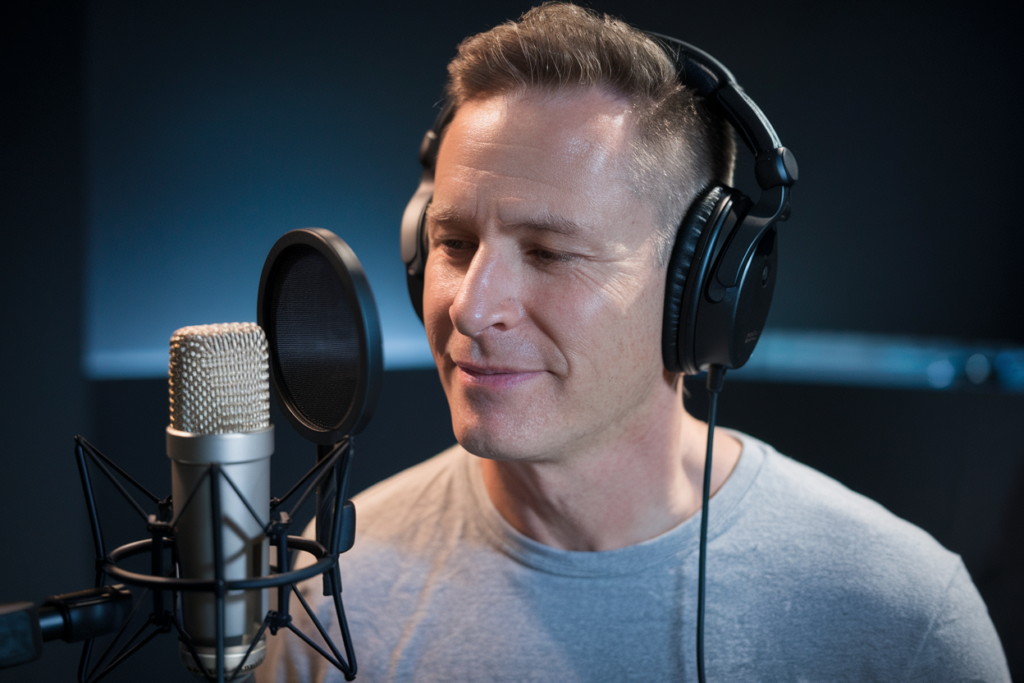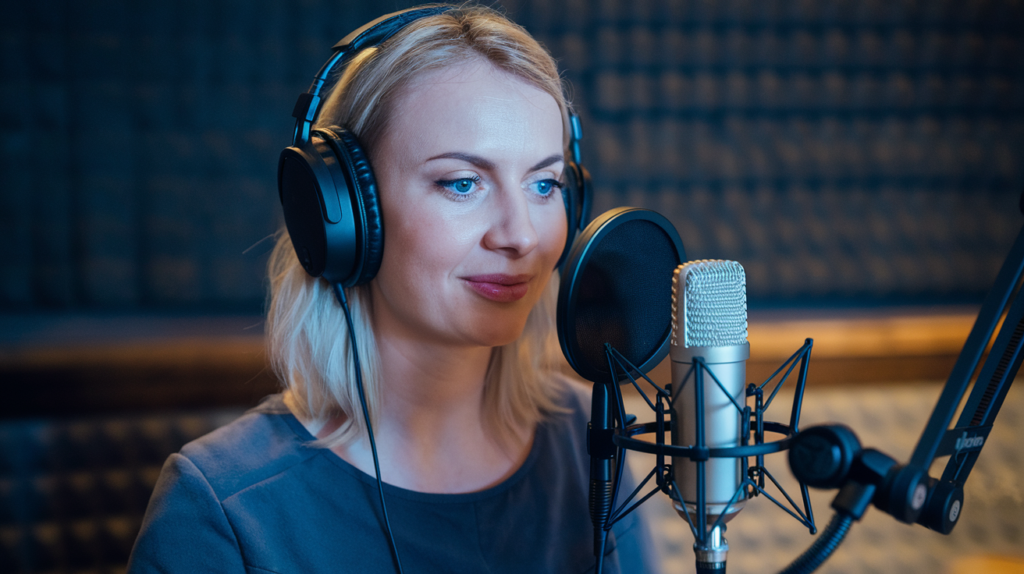Key Takeaways
- Understanding Polish Dubbing: It requires more than translation; it involves adapting content to resonate with Polish audiences for an authentic experience.
- Choosing the Right Material: Select videos that are culturally relevant and emotionally engaging to enhance connection with viewers.
- Quality Voice Actor Selection: Engage experienced voice talents who understand emotional nuances and cultural context, ensuring characters resonate authentically.
- Importance of Synchronization: Properly align audio with video to create a seamless experience, enhancing viewer immersion through careful attention to detail.
- Effective Distribution Strategies: Utilize various platforms like YouTube and social media for hosting dubbed content, while employing targeted marketing tactics for maximum visibility.
- Focus on Sound Quality: Finalize sound quality through editing techniques like equalization and compression to ensure clarity and professionalism in the final product.
Ever wondered how to create a Polish dub for your videos? It’s not just about translating words; it’s about capturing the essence of your content and connecting with a whole new audience. With the right approach, you can transform your original video into an engaging experience that resonates with Polish viewers.
Understanding Polish Dubbing
Polish dubbing goes beyond simple translation; it involves adapting content to resonate with Polish audiences. This process ensures the final product feels authentic and engaging.
What Is Dubbing?
Dubbing refers to replacing the original dialogue in a video with a translated version performed by voice actors. The aim is to create a seamless auditory experience that matches the visuals, allowing viewers to immerse themselves fully. Skilled voice talents convey emotions and nuances, ensuring that characters’ personalities shine through in their performances.
Importance of Polish Dubbing in Media
Polish dubbing plays a crucial role in making media accessible and enjoyable for Polish speakers. It allows films, TV shows, and educational videos to reach wider audiences without losing their essence. Quality dubbing enhances viewer engagement by providing relatable cultural references and maintaining the original intent of the creators. When done right, it transforms your content into an inviting experience that resonates deeply with viewers while respecting linguistic subtleties.
Preparing for Polish Dubbing
Preparing for Polish dubbing involves careful planning and attention to detail. Ensuring that your video resonates with the audience requires more than just translating dialogue; it demands a holistic approach that captures the essence of the original content.
Choosing the Right Video Material
Selecting the right video material is crucial. Consider content that’s culturally relevant and appealing to Polish viewers. You’ll want to choose videos where emotions and expressions play a significant role, allowing voice actors to showcase their skills effectively. Focus on narratives that align with local interests, ensuring your message connects authentically with the audience.
Script Translation and Adaptation
Script translation isn’t merely about changing words from one language to another; it’s about adapting phrases and cultural references for clarity and relatability. Work closely with translators who understand both languages deeply, as well as cultural nuances. Ensure they capture not only meaning but also emotional undertones, making room for voice actors’ interpretations. This preparation lays a strong foundation for effective voiceover performance, elevating viewer engagement through relatable content while preserving the original intent of your work.
Recording the Polish Dub
Recording the Polish dub involves careful selection of voice actors and setting up a suitable recording environment to produce high-quality audio.
Selecting Voice Actors
Selecting voice actors plays a crucial role in bringing your project to life. You want talent that not only speaks fluent Polish but also understands the nuances of emotion and cultural context. Look for voice artists with experience in dubbing; they’ve likely honed their skills in conveying various emotions effectively. Consider listening to samples of their previous work, focusing on how they interpret characters and deliver lines. Engaging a diverse range of voiceover talent can enhance your project by ensuring each character resonates authentically with your audience.
Setting Up the Recording Environment
Setting up the recording environment is vital for achieving professional-sounding results. Ensure you choose a quiet space, free from background noise or interruptions, which could compromise audio quality. Use soundproofing materials like foam panels or heavy curtains to minimize echoes and external sounds. Invest in quality microphones designed for voice recording; these capture clarity and detail, making a significant difference in production value. Conduct test recordings to check levels and adjust settings as needed before diving into the final session—this preparation pays off by streamlining the workflow during recording time.
By prioritizing these aspects while recording your Polish dub, you create an engaging auditory experience that connects deeply with viewers, enhancing their overall enjoyment of your content.
Mixing and Editing the Dub
Mixing and editing the dub involves aligning audio tracks with video footage to create a seamless viewing experience. You’ll focus on ensuring that voiceovers synchronize perfectly with lip movements and actions. Achieving this precision enhances viewer immersion, making it feel like the characters are speaking naturally in Polish.
Synchronizing Audio and Video
Synchronizing audio and video requires careful attention to detail. Start by importing both the original audio track and your newly recorded voiceover into your editing software. Use visual cues from the video, like mouth movements or gestures, to align dialogue accurately. Adjust timing as necessary so that every word matches what viewers see on screen. This step is crucial; poor synchronization can break immersion, pulling audiences out of the story you’re telling.
Finalizing the Sound Quality
Finalizing sound quality ensures clarity and professionalism in your project. Begin by cleaning up any background noise from recordings using audio editing tools. Consider applying equalization (EQ) to enhance vocal clarity while reducing unwanted frequencies. Additionally, use compression techniques to balance volume levels across various voice actors, creating a cohesive sound profile throughout your dub. Finally, listen through high-quality headphones or speakers for an accurate representation of how audiences will hear it—this attention to detail significantly impacts overall engagement with your content.
By focusing on these elements during mixing and editing, you cultivate a polished final product that resonates well with Polish viewers while maintaining fidelity to the original material.
Distribution of Dubbing
Distributing your Polish dub effectively ensures it reaches the right audience. Various platforms and strategies can maximize visibility and engagement.
Platforms for Hosting Dubbed Videos
Choosing the right platform for hosting your dubbed videos plays a crucial role in their success. Consider popular video-sharing sites like YouTube, where you can easily reach millions of viewers. Streaming services also present opportunities; many look for localized content to attract diverse audiences. Social media platforms allow quick sharing and engagement, helping your dubbed videos gain traction through likes, shares, and comments.
When uploading, ensure you use relevant tags and descriptions to improve discoverability. Creating playlists can keep viewers engaged with related content. Don’t overlook niche websites that cater specifically to Polish audiences; these platforms often appreciate localized content tailored to their viewers’ preferences.
Marketing Your Dubbed Content
Marketing your dubbed content requires a strategic approach to capture attention. Start by leveraging social media marketing campaigns aimed at Polish-speaking communities. Utilize eye-catching visuals from your videos as promotional materials across various channels.
Collaborating with influencers who resonate with Polish audiences can amplify your reach significantly. They bring credibility and establish trust, encouraging their followers to engage with your work.
Email marketing is another effective tool—build a mailing list comprising interested viewers or industry professionals who may benefit from high-quality dubbing services. Share updates about new releases or behind-the-scenes insights into the dubbing process.
Consider SEO optimization when creating promotional content online; using keywords related to voiceover talent and dubbing will enhance search visibility. Engaging blog posts discussing the importance of quality dubbing or highlighting specific projects can position you as an authority in this field while attracting potential clients seeking professional voiceover services.
By strategically selecting distribution platforms and employing targeted marketing tactics, you create pathways for your Polish dub that lead directly to eager audiences ready to enjoy engaging content.
Conclusion
Creating a Polish dub for your videos isn’t just about translation; it’s about crafting an engaging experience that resonates with local audiences. By focusing on cultural relevance and emotional depth, you can transform your content into something truly captivating.
Remember the importance of collaboration with skilled translators and voice actors who can bring your vision to life. Pay close attention during the recording and editing phases to ensure high audio quality and seamless synchronization with visuals.
Finally, don’t overlook distribution strategies. Use the right platforms and marketing techniques to reach Polish-speaking viewers effectively. With dedication and attention to detail, you’ll elevate your video content in ways that connect meaningfully with your audience.
Frequently Asked Questions
What is Polish dubbing?
Polish dubbing is the process of replacing original dialogue in videos with a translated version performed by skilled voice actors. It aims to capture the essence of the original content while making it relatable and enjoyable for Polish-speaking audiences.
Why is cultural adaptation important in Polish dubbing?
Cultural adaptation ensures that the dubbed content resonates with local viewers. It’s essential for conveying emotions and nuances accurately, allowing for a deeper connection between the audience and the material being presented.
How do you choose voice actors for Polish dubbing?
Selecting voice actors involves finding individuals who are fluent in Polish and can convey various emotions authentically. Diversity among voice talent enhances character representation, making it more relatable to viewers.
What does the recording phase involve in creating a Polish dub?
The recording phase requires setting up a professional environment free from background noise. Quality microphones are used to capture clear audio, ensuring that voice performances align well with emotional context.
How is mixing and editing handled in Polish dubbing?
Mixing and editing focus on synchronizing audio tracks with video footage, ensuring dialogue matches lip movements. This meticulous process enhances viewer immersion through attention to sound quality and detail alignment.
What platforms are best for distributing dubbed content?
Effective distribution channels include popular video-sharing sites like YouTube, streaming services seeking localized content, and social media platforms that enable quick sharing. These channels help creators reach their target audience effectively.
How can I market my Polish-dubbed videos effectively?
Marketing strategies include leveraging social media campaigns targeting Polish-speaking communities, collaborating with influencers, using email marketing, and optimizing SEO to enhance visibility. Such tactics help connect your content with eager audiences.







